-
 Bitcoin
Bitcoin $106,731.2224
-1.05% -
 Ethereum
Ethereum $2,444.9804
-1.20% -
 Tether USDt
Tether USDt $1.0003
0.01% -
 XRP
XRP $2.1882
0.09% -
 BNB
BNB $651.1435
-0.61% -
 Solana
Solana $148.3252
-2.09% -
 USDC
USDC $1.0000
0.01% -
 TRON
TRON $0.2787
0.55% -
 Dogecoin
Dogecoin $0.1598
-3.16% -
 Cardano
Cardano $0.5520
-2.43% -
 Hyperliquid
Hyperliquid $39.0960
-2.64% -
 Bitcoin Cash
Bitcoin Cash $516.9519
2.98% -
 Sui
Sui $2.7011
-2.95% -
 Chainlink
Chainlink $13.0582
-1.71% -
 UNUS SED LEO
UNUS SED LEO $8.9250
-2.53% -
 Stellar
Stellar $0.2359
-0.18% -
 Avalanche
Avalanche $17.3856
-3.73% -
 Toncoin
Toncoin $2.8095
-3.56% -
 Shiba Inu
Shiba Inu $0.0...01121
-1.95% -
 Litecoin
Litecoin $85.2795
-0.85% -
 Hedera
Hedera $0.1471
-2.15% -
 Monero
Monero $319.8004
1.12% -
 Dai
Dai $1.0001
0.01% -
 Ethena USDe
Ethena USDe $1.0001
0.02% -
 Bitget Token
Bitget Token $4.5344
-1.07% -
 Polkadot
Polkadot $3.3224
-2.96% -
 Uniswap
Uniswap $6.9697
-2.75% -
 Aave
Aave $266.1658
-2.25% -
 Pepe
Pepe $0.0...09414
-3.41% -
 Pi
Pi $0.4913
-3.29%
How to hide specific assets in Exodus wallet?
To hide assets in Exodus wallet, open the app, select the asset, access settings, and choose to hide it; the asset will be removed from the main portfolio view.
Apr 06, 2025 at 12:07 pm
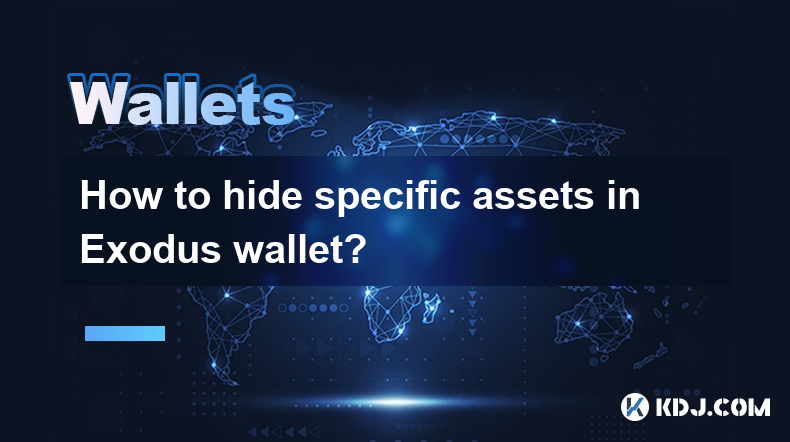
How to Hide Specific Assets in Exodus Wallet
Exodus wallet is a popular choice for cryptocurrency enthusiasts due to its user-friendly interface and robust security features. One of the lesser-known functionalities of Exodus is the ability to hide specific assets from your main portfolio view. This can be useful for decluttering your wallet's interface, focusing on your primary investments, or for privacy reasons. In this article, we will guide you through the process of hiding specific assets in Exodus wallet, ensuring you can manage your portfolio effectively.
Understanding the Need to Hide Assets
Before diving into the steps, it's important to understand why someone might want to hide assets in their Exodus wallet. Hiding assets does not mean selling or transferring them; it simply removes them from the main view. This can help users focus on their primary investments or keep certain assets out of sight for privacy reasons. Additionally, hiding assets can help declutter the wallet interface, making it easier to navigate and manage your portfolio.
Preparing to Hide Assets
Before you start hiding assets, ensure that you have the latest version of the Exodus wallet installed. It's also a good idea to back up your wallet to prevent any data loss. Once you have these prerequisites in place, you can proceed with the steps to hide your assets.
Steps to Hide Specific Assets
To hide specific assets in Exodus wallet, follow these steps:
- Open the Exodus Wallet: Launch the Exodus application on your device.
- Navigate to the Portfolio: Once the wallet is open, you will be directed to the portfolio view, where all your assets are displayed.
- Select the Asset to Hide: Click on the asset you wish to hide. This will open the asset's detailed view.
- Access the Settings: In the detailed view, look for the settings icon or a three-dot menu, which will open additional options.
- Hide the Asset: Within the settings or menu, you should find an option to hide the asset. Click on this option to hide the asset from your main portfolio view.
Verifying the Hidden Assets
After hiding an asset, you should verify that it has been successfully removed from the main portfolio view. Navigate back to the portfolio screen and check if the asset is no longer visible. If you need to access the hidden asset later, you can do so by going to the settings or the hidden assets section, depending on the version of Exodus you are using.
Unhiding Assets in Exodus Wallet
If you decide to unhide an asset, the process is straightforward. Follow these steps:
- Open the Exodus Wallet: Launch the Exodus application on your device.
- Access the Settings: Navigate to the wallet's settings or the hidden assets section.
- Select the Hidden Asset: Find the asset you want to unhide from the list of hidden assets.
- Unhide the Asset: Click on the option to unhide the asset, and it will reappear in your main portfolio view.
Managing Hidden Assets Effectively
Managing hidden assets effectively is crucial for maintaining a clear and organized portfolio. Here are some tips to help you manage your hidden assets:
- Regularly Review Hidden Assets: Periodically check your hidden assets to ensure they are still relevant to your investment strategy.
- Understand the Impact on Portfolio Value: Remember that hidden assets are still part of your total portfolio value, even if they are not visible in the main view.
- Use Hidden Assets for Privacy: If you are concerned about privacy, hiding certain assets can prevent others from seeing your entire portfolio at a glance.
Security Considerations When Hiding Assets
While hiding assets can enhance the user experience, it's important to consider the security implications. Here are some security tips to keep in mind:
- Backup Your Wallet: Always back up your wallet before making significant changes, including hiding assets.
- Keep Your Software Updated: Ensure that you are using the latest version of Exodus to benefit from the latest security features and bug fixes.
- Use Strong Passwords: Protect your wallet with a strong password to prevent unauthorized access to your assets, hidden or otherwise.
Customizing Your Exodus Experience
Exodus wallet offers various customization options to enhance your user experience. Hiding assets is just one of many features that can help you tailor the wallet to your needs. Other customization options include setting up custom portfolios, adjusting the display of asset values, and enabling or disabling certain features. By taking advantage of these options, you can create a personalized and efficient cryptocurrency management experience.
Exploring Other Exodus Features
In addition to hiding assets, Exodus wallet offers a range of other features that can enhance your cryptocurrency management. These include:
- Staking: Earn rewards by staking certain cryptocurrencies directly within the Exodus wallet.
- Exchange: Easily exchange one cryptocurrency for another using the built-in exchange feature.
- Hardware Wallet Integration: Connect your Exodus wallet to hardware wallets like Trezor or Ledger for added security.
By exploring these features, you can maximize the utility of your Exodus wallet and streamline your cryptocurrency management.
Common Questions About Hiding Assets in Exodus Wallet
Q: Can I still access my hidden assets in Exodus wallet?
A: Yes, you can access your hidden assets by navigating to the settings or the hidden assets section within the Exodus wallet.
Q: Will hiding assets affect their value or security?
A: No, hiding assets does not affect their value or security. Hidden assets remain part of your total portfolio value and are still secured within the wallet.
Q: Can I hide multiple assets at once in Exodus wallet?
A: Currently, Exodus wallet requires you to hide assets one at a time. You will need to repeat the hiding process for each asset you wish to hide.
Q: Is it possible to hide assets on the mobile version of Exodus wallet?
A: Yes, the process to hide assets is similar on the mobile version of Exodus wallet. Follow the same steps outlined in the article to hide assets on your mobile device.
Q: What happens if I uninstall and reinstall Exodus wallet after hiding assets?
A: If you uninstall and reinstall Exodus wallet, your hidden assets will still be present in your wallet as long as you restore from your backup. However, you may need to re-hide them after reinstalling.
Q: Can I hide assets in Exodus wallet if I am using a hardware wallet?
A: Yes, you can hide assets in Exodus wallet even if you are using a hardware wallet. The process remains the same, and your assets will still be secured by the hardware wallet.
Q: Will hiding assets in Exodus wallet affect my transaction history?
A: No, hiding assets does not affect your transaction history. All transactions related to the hidden assets will still be visible in the transaction history section of the wallet.
Q: Is there a limit to the number of assets I can hide in Exodus wallet?
A: There is no specific limit to the number of assets you can hide in Exodus wallet. However, hiding too many assets may make it difficult to manage your portfolio effectively.
Q: Can I hide assets in Exodus wallet if I am using a multi-signature wallet?
A: Hiding assets in a multi-signature wallet setup within Exodus is not directly supported. You may need to manage your assets differently in such setups.
Q: How can I ensure that my hidden assets remain secure?
A: To ensure the security of your hidden assets, always use strong passwords, enable two-factor authentication if available, and regularly back up your wallet. Additionally, keep your software updated to benefit from the latest security enhancements.
Disclaimer:info@kdj.com
The information provided is not trading advice. kdj.com does not assume any responsibility for any investments made based on the information provided in this article. Cryptocurrencies are highly volatile and it is highly recommended that you invest with caution after thorough research!
If you believe that the content used on this website infringes your copyright, please contact us immediately (info@kdj.com) and we will delete it promptly.
- Powell, Stablecoin Regulation, and Circle's Bold Move: A New York Minute on Crypto's Future
- 2025-07-02 02:30:12
- Ethereum Price, Tom Lee, and Bitcoin: A New Era for Crypto?
- 2025-07-02 02:30:12
- Hoskinson, Ripple, Cardano DeFi: A New Era of Collaboration?
- 2025-07-02 02:35:12
- BlockDAG, ALGO, and the Crypto Trends Shaping 2025
- 2025-07-02 01:50:12
- Cold Wallet, Token, Gains: Is CWT the Smartest Crypto Move?
- 2025-07-02 01:10:12
- Pi Coin's Rocky Ride: Support Levels, Recovery Timeline, and What the Experts Are Saying
- 2025-07-02 01:10:12
Related knowledge
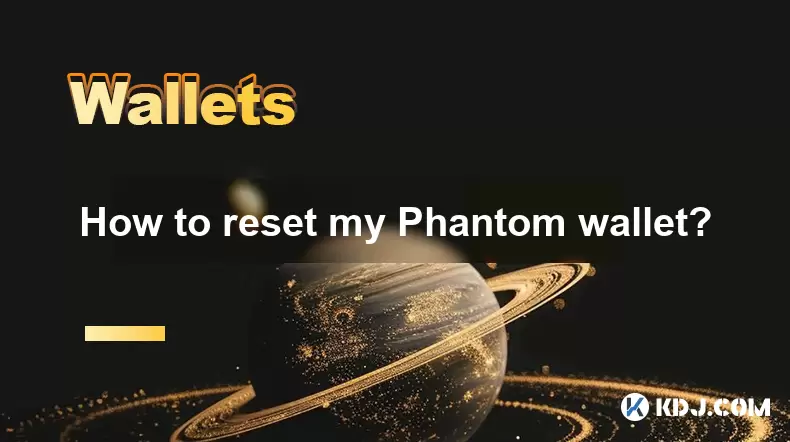
How to reset my Phantom wallet?
Jul 02,2025 at 12:36am
Understanding the Need for Resetting Your Phantom WalletIf you're using a Phantom wallet, you may encounter situations where resetting your wallet becomes necessary. This could be due to forgotten passwords, seed phrase issues, or account corruption. Phantom is a non-custodial wallet primarily used for interacting with the Solana blockchain, and it stor...
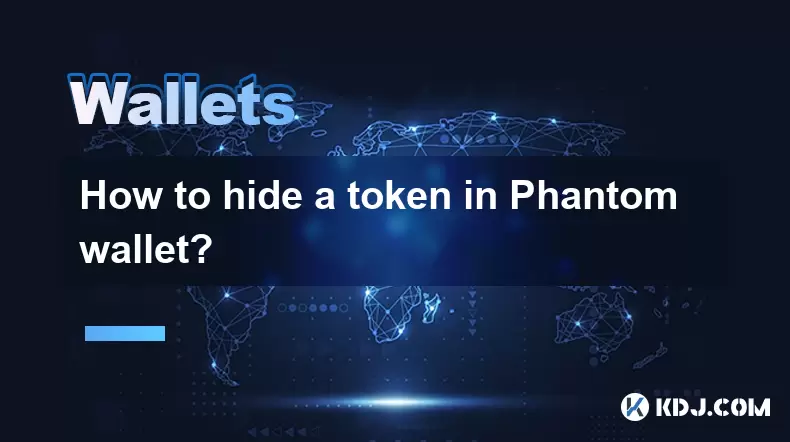
How to hide a token in Phantom wallet?
Jul 01,2025 at 05:49pm
Understanding the Phantom Wallet InterfacePhantom wallet is a popular non-custodial wallet used primarily for interacting with the Solana blockchain. It allows users to store, send, receive, and manage various tokens, including both fungible and non-fungible tokens (NFTs). Before attempting to hide a token, it's essential to understand how the wallet in...
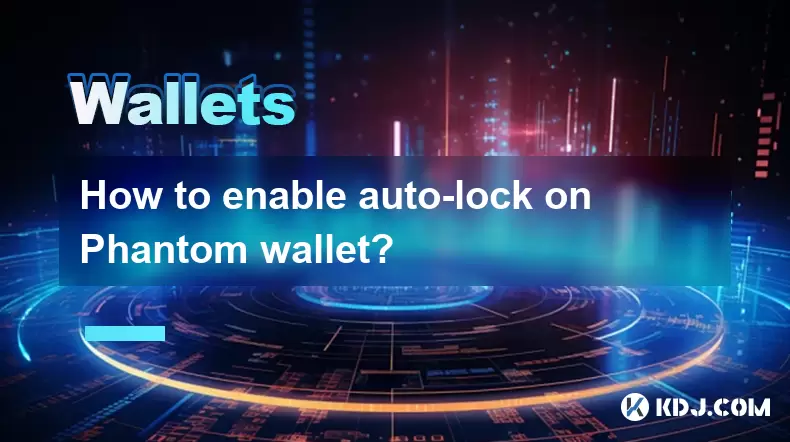
How to enable auto-lock on Phantom wallet?
Jul 01,2025 at 04:01pm
What is Auto-Lock in Phantom Wallet?Phantom wallet is a popular non-custodial cryptocurrency wallet used primarily for interacting with the Solana blockchain. One of its security features includes the ability to set an auto-lock timer, which ensures that the wallet locks itself automatically after a period of inactivity. Auto-lock enhances security by p...
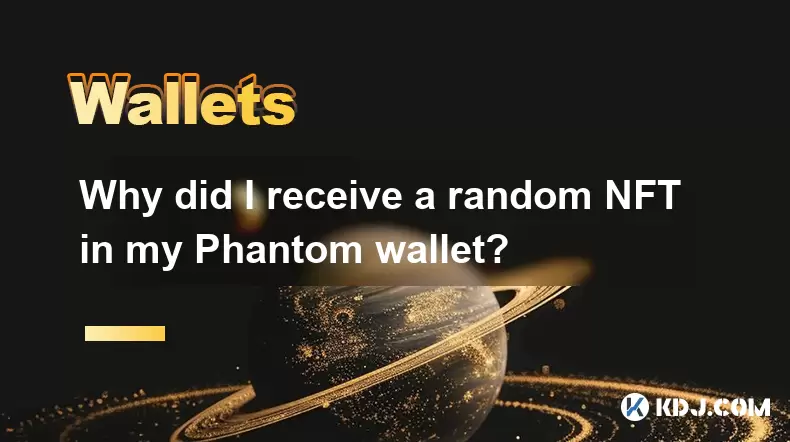
Why did I receive a random NFT in my Phantom wallet?
Jul 01,2025 at 09:00pm
Receiving an Unexpected NFT in Your Phantom WalletIf you've recently opened your Phantom wallet and noticed an unfamiliar NFT appearing in your collection, you're not alone. Many users have reported receiving random or unsolicited non-fungible tokens, often without any prior interaction with the project or sender. This phenomenon has become increasingly...
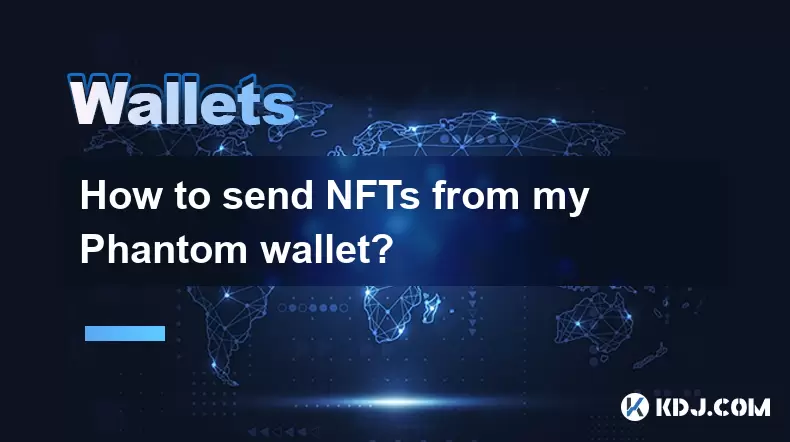
How to send NFTs from my Phantom wallet?
Jul 02,2025 at 03:15am
What is Phantom Wallet and Why Use It for NFT Transfers?Phantom wallet is a non-custodial cryptocurrency wallet primarily used for interacting with the Solana blockchain. It supports both tokens and NFTs, making it a popular choice among users who engage in decentralized finance (DeFi) or digital collectibles. The interface is user-friendly, allowing ev...
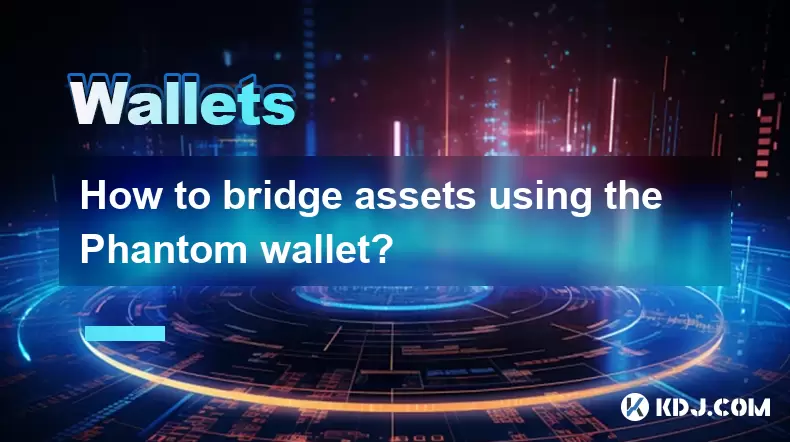
How to bridge assets using the Phantom wallet?
Jul 02,2025 at 02:50am
Understanding the Basics of Asset BridgingAsset bridging refers to the process of transferring digital assets from one blockchain network to another. This functionality is crucial in a multi-chain ecosystem where users may need to move tokens between different networks for various purposes, such as accessing decentralized applications (dApps), participa...

How to reset my Phantom wallet?
Jul 02,2025 at 12:36am
Understanding the Need for Resetting Your Phantom WalletIf you're using a Phantom wallet, you may encounter situations where resetting your wallet becomes necessary. This could be due to forgotten passwords, seed phrase issues, or account corruption. Phantom is a non-custodial wallet primarily used for interacting with the Solana blockchain, and it stor...

How to hide a token in Phantom wallet?
Jul 01,2025 at 05:49pm
Understanding the Phantom Wallet InterfacePhantom wallet is a popular non-custodial wallet used primarily for interacting with the Solana blockchain. It allows users to store, send, receive, and manage various tokens, including both fungible and non-fungible tokens (NFTs). Before attempting to hide a token, it's essential to understand how the wallet in...

How to enable auto-lock on Phantom wallet?
Jul 01,2025 at 04:01pm
What is Auto-Lock in Phantom Wallet?Phantom wallet is a popular non-custodial cryptocurrency wallet used primarily for interacting with the Solana blockchain. One of its security features includes the ability to set an auto-lock timer, which ensures that the wallet locks itself automatically after a period of inactivity. Auto-lock enhances security by p...

Why did I receive a random NFT in my Phantom wallet?
Jul 01,2025 at 09:00pm
Receiving an Unexpected NFT in Your Phantom WalletIf you've recently opened your Phantom wallet and noticed an unfamiliar NFT appearing in your collection, you're not alone. Many users have reported receiving random or unsolicited non-fungible tokens, often without any prior interaction with the project or sender. This phenomenon has become increasingly...

How to send NFTs from my Phantom wallet?
Jul 02,2025 at 03:15am
What is Phantom Wallet and Why Use It for NFT Transfers?Phantom wallet is a non-custodial cryptocurrency wallet primarily used for interacting with the Solana blockchain. It supports both tokens and NFTs, making it a popular choice among users who engage in decentralized finance (DeFi) or digital collectibles. The interface is user-friendly, allowing ev...

How to bridge assets using the Phantom wallet?
Jul 02,2025 at 02:50am
Understanding the Basics of Asset BridgingAsset bridging refers to the process of transferring digital assets from one blockchain network to another. This functionality is crucial in a multi-chain ecosystem where users may need to move tokens between different networks for various purposes, such as accessing decentralized applications (dApps), participa...
See all articles

























































































